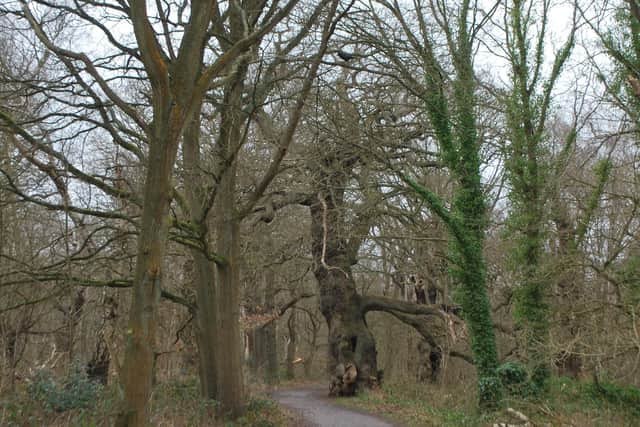Sherwood Forest highlights importance of ancient oaks as new nature programme airs
This article contains affiliate links. We may earn a small commission on items purchased through this article, but that does not affect our editorial judgement.
and live on Freeview channel 276
The new series sees Sir David Attenborough celebrating the wonders of the islands we call home, revealing the habitats on our doorstep, including Britain’s ancient woodlands.
Filmed over the course of three years, the five-part series – now airing on BBC One on Sundays, at 7pm – investigates how our woodland, grassland, freshwater and ocean habitats support wildlife.
Advertisement
Hide AdAdvertisement
Hide AdAt RSPB Sherwood Forest, staff and volunteers have been working to sustain the ancient oak woodland, a site of special scientific interest known throughout the world for its association with the legend of Robin Hood.


Bosses say the forest is “an increasingly rare and irreplaceable landscape”, providing a vital habitat for a vast array of flora and fauna which rely on the decaying wood of hundreds of ancient oaks as part of their lifecycle.
Rob James. RSPB Sherwood Forest communications officer, said: “I hope the series will raise awareness of the incredible nature we’ve got across the UK, but also locally I hope it raises awareness of this incredible landscape here.
“Ancient woodlands are an increasing rare and really important habitat for lots of reasons and at Sherwood Forest we’ve got one of the few remaining in the UK.
Advertisement
Hide AdAdvertisement
Hide Ad“I hope it helps people understand why ancient oak woodlands like Sherwood Forest are so important, but also also maybe to take action as well. You could volunteer here, or just visit and spend some time here admiring some of the incredible ancient oaks – they’ve got such incredible character, some even have names.


“You could also join RSPB or donate to the work we do here, because it’s so important. What we do here today sustains this forest for generations, even thousands of years ahead.
“Sherwood Forest is obviously associated with the legend of Robin Hood and that’s a key cultural element which we try to preserve as much as we can – people come from all over the world to see the place where Robin Hood lived – but also from a natural perspective, it’s a really important landscape, Ancient oak woodlands are becoming rarer and rarer. They provide a really important habitat for lots of types of rare invertebrates and rare birds as well.”
Managing the woodland and prolonging the lives of ancient trees means ensuring ‘the right tree is in the right place’. This can mean removing competing young trees, or opening up the canopy to provide the sunlight and space ancients oaks need. It also means identifying the ‘ancients of the future’, younger trees which have the potential to become ecologically valuable ancients centuries from now.


Advertisement
Hide AdAdvertisement
Hide AdChloe Ryder, RSPB Sherwood Forest site manager, said: “The work we do today is designed to sustain the forest for centuries ahead. The ‘right tree in the right place’ is an approach which enables our nature-rich ancient oak trees to live as long as possible and bridges a generation gap in our trees which could damage the forest’s delicate ecological balance.”
The RSPB says there is a range of ways people can help, such as planting the right tree in the right place – see bit.ly/3LKmcN1 – while piles of decaying wood can be brilliant for biodiversity, see bit.ly/3FK6mhS

